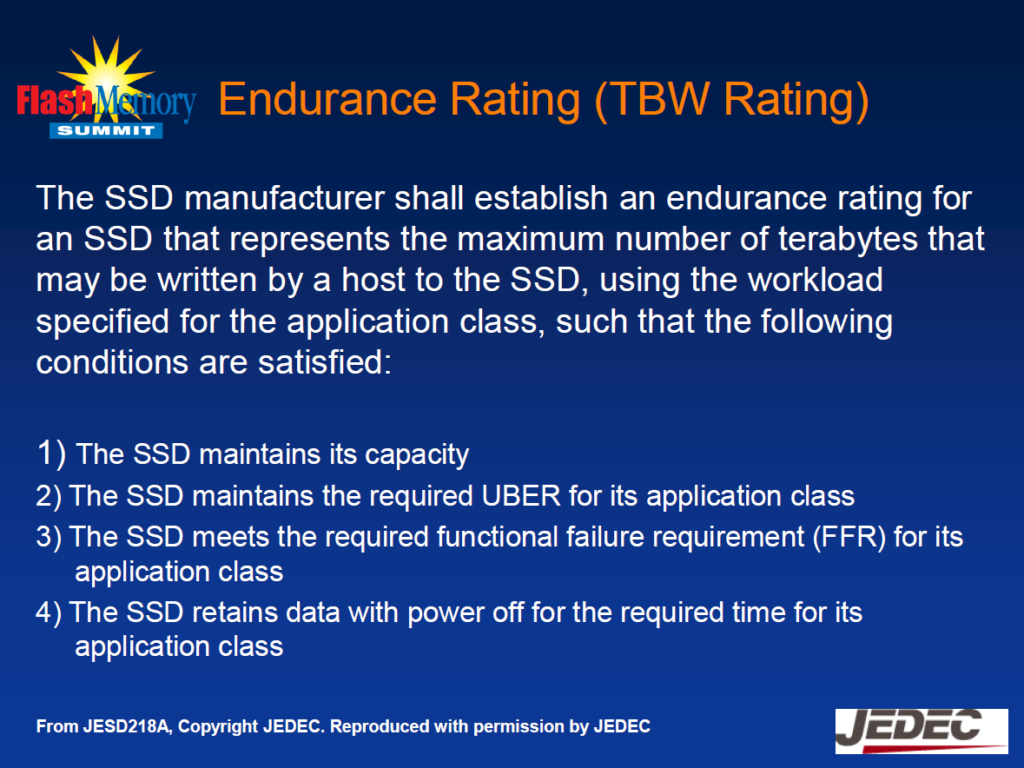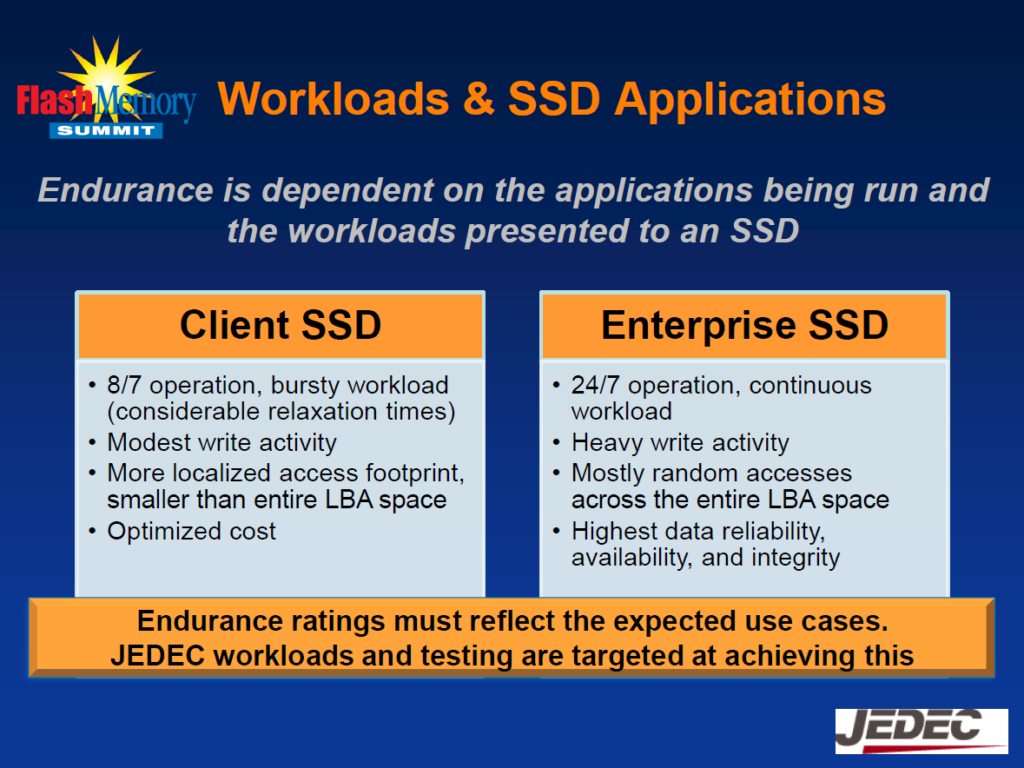
Products related to this article
Introduction
When selecting a storage device, data access performance, price, and longevity are often the key points.
Especially in the case of Solid State Drives (SSDs), which use NAND flash memory as their nonvolatile storage medium, longevity can be one of the main criteria.
As is widely known, the product life of SSDs depends on the number of times a block of NAND flash memory (hereinafter simply referred to as “block”) can be rewritten, aside from damage due to improper use or dropping.
Many people may think of Terabytes Written (TBW) as an indicator of SSD lifespan attributable to the number of times a block is rewritten.
However, TBW is a value when an SSD is used in a certain way (workload), and the value changes when the same SSD is used in different ways.
This is the same for both SATA and NVMe SSDs.
For example, even if the product specification of an SSD states “TBW :500 TB,” it does not guarantee that 500 TB can be written from the host under any usage.
Therefore, in the next few articles, we will summarize the SSD selection criteria, including longevity.
This article will define TBW and explain what TBW means in SSD product specifications.
Summary
- TBW in SSD product specifications are often calculated using JEDEC workloads (especially client workloads).
- TBW strongly depends on the workload, so the TBW in the product specifications may not be helpful.
- It is dangerous to select a product by relying on the TBW in SSD product specifications.
TBW is defined by JEDEC
Terabytes Written (TBW) is defined by JEDEC in a specification called JESD218.¹
The definition of TBW in its JESD218 is shown in the figure below. This is taken from the presentation material at the Flash Memory Summit held in August 2011.

Conditions 1) to 4) are the basic functional requirements that SSDs should have as storage.
It is possible because of this, the part “the maximum size that a host can write to an SSD” has become the sole focus, and this TBW is used as one of the indicators to compare SSDs in various situations.
The problem with this is that the “using workloads for application classes” part is not taken into account. The existence of this description is evidence that TBW depends on workloads (i.e., usage).
In addition, the above “workloads for application classes” are usually defined by JEDEC in JESD2193. Specifically, there are two types of workloads: client workloads and enterprise workloads.
What is a “client workload” under JESD 219?
A “client workload” as defined by JESD 219 is a workload for a “client SSD”.

The figure describes the client SSD workload (left side of the figure) as “running 8 hours a day, 7 days a week,” “bursty workload with fairly long rest times (time without host access to SSD),” “few writes,” “very localized access area (footprint) in total LBA space,” and “cost optimized.”
All of these features are intended for SSDs installed in so-called office and home-use PCs, especially the system drive on which the OS is installed.
Therefore, the TBW calculated using the JESD219 client workload is a value that can be used when selecting SSDs for office and home use PCs, especially for system drives where the OS is installed.
The following table shows examples of how TBW calculated using JESD219 client workloads can be used as a reference and how it cannot be used as a reference.

Conclusion
While TBW numbers are easy to use to compare products, if the workload used in the calculation does not match the actual workload in use, the comparison may be off the mark and the choice may not meet your requirements.
In the next article, we will explain why TBW depends on your workload, and the factors that influence how large or small TBW is, and more.
Reference
- JEDEC, “Solid-State Drive (SSD) Requirements and Endurance Test Method”, JESD218B.01, March, 2016
- Alvin Cox, “JEDEC SSD Endurance Workloads”, Flash Memory Summit 2011, Santa Clara, CA, August, 2011
- JEDEC, “Solid-State Drive (SSD) Endurance Workloads”, JESD219A, July, 2012
Trademarks of Other Companies
Although registered trademark marks are not indicated in the articles, company names and product names appearing in the articles are generally trademarks or registered trademarks of the respective companies.
About the article
The content of this article is information at the time of publication. Please note that the information is subject to change without notice.

